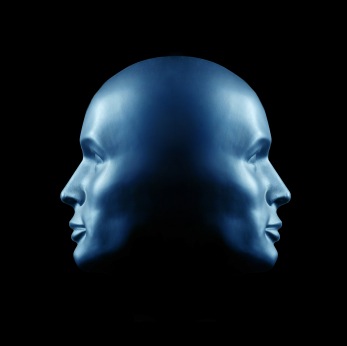Last week, in Can Radically Different Cultures Produce Equally Great Results?, I posed the question: If measured by financial performance, can dramatically different organizations be equally successful? I n this short series about culture development, we’ll take a look at how sound business principles and cultural patterns often collide within an organization’s walls.

How can opposing cultures both succeed?
In many ways, it doesn’t seem fair that both charitable and churlish cultures can thrive.
It’s easy to embrace the benevolent culture created by Sid Rich (we’ll call it Company South, “S” for Sid) as profiled in the first article in this series.
His company deserves to be successful.
Wouldn’t it be great if that was the company you worked for?
[pullquote]Strive not to be a success, but rather to be of value. ~ Albert Einstein[/pullquote]
What if you’re stuck on the other side of the tracks?
Contrarily, when you look across the aisle at the rough and tumble world of Company North (“N” for Nasty), highlighted by temper tantrums, public floggings and a petulant devotion to spending a dime on anything, we’re either glad we’re not working there … or wishing we didn’t.
Some powerful lessons are evident as we compare and contrast these companies, their styles and culture, although some lessons are not very inviting.
Whatever works?
Some of you might be thinking, “whatever works?”
Maybe a few core principles like product differentiation, low-cost and aggressive pricing offer a simple recipe for financial success.
Maybe culture isn’t really that important after all?
If those concepts are working, why worry about the culture. It’s just whining, isn’t it?
Sadly, loyalty can be bought
One troubling lesson is clear: Loyalty, or at least fealty, can be bought.
Our Company North was a revolving door of executives.
The president left the company and returned twice, the EVP once, the CFO twice, all for a much higher salary … more accurately, combat pay.
The psychic income came from the marketplace, which was gaga over the products that were flying off the shelves at top department and specialty stores across the country. Sales were booming, so the opportunity to travel frequently to meet with retail executives was both alluring and satisfying – and a good excuse to get out of the workplace dungeon that served as the company’s headquarters.
[pullquote]The first article in this series on culture development, explores how radically different cultures can produce equally successful financial results.[/pullquote]
Executives didn’t leave Company South
At Company South, I don’t remember any senior executive leaving during the almost six years I was there.
Some probably should have, but the company was patient, if not indulgent, with certain executives that had “earned their spurs.”
The company made these decisions consciously and continued its march to revenue and profit enhancement to support those investments.
Cost Management Can Be Done with Dignity
Company South drew an important distinction between conscientious cost management and contentious cost reduction.
It was vigilant about cost control but not at the expense of a strong culture that embraced hard work and spawned unwavering commitment.
Its employees were engaged in the cost containment process and didn’t feel threatened by its intelligent application.
Or, Cost-Cutting can be Hand-Hand Combat
At Company North, no one was safe, and everyone knew that cost reduction, at all costs, was the presiding model.
You could be in the line of fire yourself and not know it until the bullet hit. As a result, employees were defensive about their cost centers but eager to implicate other departments.
Coming through the economic hardships of The Great Recession, cost management was a pretty important objective.
Frugality is often resurrected as the patron saint of a recovering economy.
People are the Magic Potion that make companies thrive
In an environment like The Great Recession, it’s easy to forget that people are the cornerstones of our businesses.
Yes, there are difficult decisions to be made about people in a suffocating economy. But it can be done with dignity and honor, and employees can be engaged in the process as companies seek to survive and rebuild.
Is Fear More Powerful than Love?
Some executives seem to believe that fear is a stronger motivator than love.
A lot of management treatises conclude that such is the reality of the human condition.
We’ll continue to explore some of these business tenets when we’re together again and learn more about the ingredients that fostered the success of Company North despite its detestable culture.
We’ll also see how essential principles can be applied like emery paper rather than a switch blade as we evaluate the success of Company South.
Question: Does Company Culture make any difference or is it just a race to the finish line no matter what? What do you look for in a company culture where you’re working? You can easily add your comment below, or by visiting our Facebook Page or @Exkalibur on Twitter. I visit them every day and look forward to discussing these ideas and concepts with you.



